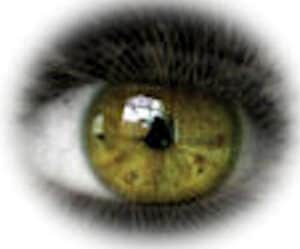Research into saffron reveals promising indications of its neuroprotective properties, which safeguard nerves from damage, degeneration, and impairment, particularly concerning photoreceptors.
Numerous studies on saffron supplementation among individuals with conditions such as age-related macular degeneration, glaucoma, diabetic macular edema, Stargardt’s disease, and retinitis pigmentosa have demonstrated encouraging results in shielding retinal nerves from degenerative processes.
Understanding Saffron: Nature’s Precious Spice
Saffron, a coveted spice, originates from the three vivid red stigmas, each approximately 25-30 mm long, of the crocus flower. Distinct from the spring-blooming crocus commonly found in the United States, saffron comes from a variety of crocus known as Crocus sativus, primarily cultivated in the Middle East, where it blooms in the Fall.
Iran stands as the leading global producer of saffron. However, its production is a labor-intensive process, as it requires the painstaking collection of thousands of flowers to yield merely an ounce of this prized spice. As a result, saffron commands a high price, averaging around $73. USD per ounce.
Unveiling Saffron’s Eye-Nurturing Powers
Saffron has anti-oxidant, anti-inflammatory, and neuroprotective properties. Numerous studies, though predominantly conducted on animals, have delved into the impact of saffron on the photoreceptors nestled within the neural retina of the eye. These photoreceptors, specialized nerve cells, are pivotal in translating light energy into vision.
Prominent research exploring the effects of antioxidants on slowing the progression of macular degeneration in humans has yielded encouraging results. Similarly, studies on saffron suggest its potential neuroprotective prowess in shielding photoreceptors from damage, degeneration, and impairment, as evidenced by animal trials showcasing its ability to preserve photoreceptor function.
Moreover, a compelling animal study hinted at saffron’s capacity to influence gene expression—an intriguing finding, especially for individuals grappling with hereditary retinal ailments like macular degeneration, Stargardt’s disease, and retinitis pigmentosa. Human research further supports these findings, revealing that saffron may enhance retinal sensitivity, particularly beneficial in the early stages of macular degeneration.
Saffron’s Impact on Eye Diseases
Saffron, akin to numerous other herbal supplements, possesses antioxidant, anti-inflammatory, and neuroprotective properties. However, it’s the additional bioactivities of saffron that garner attention in the realm of eye health.
Saffron’s Potential in Age-Related Macular Degeneration
The hope surrounding saffron as a prospective treatment for age-related macular degeneration (AMD) stems from several studies conducted on patients with early-stage, mild to moderate dry AMD.
Dosages administered in these studies typically ranged from 20 to 50 mg per day. Each study exhibited an enhancement in ERG sensitivity and an improvement in visual acuity by approximately one line of letters on a visual acuity chart. Notably, these benefits reached their peak potential after three months of supplementation, with no further enhancement observed thereafter, suggesting a plateau effect.
Glaucoma Management with Saffron Supplementation
In a small-scale clinical trial, patients with stable Primary Open Angle Glaucoma, already receiving treatment with a beta-blocker eye drop (timolol) and a carbonic anhydrase inhibitor (dorzolamide), were administered 30 mg of saffron daily for a duration of four weeks. Researchers observed a notable reduction in eye pressure during this supplementation period.
However, it’s noteworthy that once the saffron supplementation was discontinued, eye pressure reverted to pre-supplementation levels, indicating a transient effect.
Examining Saffron’s Role in Diabetic Macular Edema
In a small-scale study involving diabetics, administration of a crocin extract at a dosage of 15 mg per day over a span of three months yielded remarkable results, notably a significant improvement in visual acuity.
Moreover, researchers observed noteworthy reductions in HbA1c and fasting blood glucose levels following oral crocin supplementation. This led to the conclusion that supplementation with this saffron extract enhances blood sugar regulation by boosting insulin sensitivity and averting pancreatic beta-cell failure. Such mechanisms hold promise in mitigating the risk of diabetic retinopathy and maculopathy. (Ref: Saffron (Crocus sativus L.) in Ocular Diseases : …)
: …)
Saffron’s Potential in Stargardt’s Disease
Stargardt’s Disease, a hereditary form of macular degeneration, predominantly affects individuals in their first, second, and third decades of life. This condition stems from a defective ABCA4 gene, leading to the accumulation of toxic retinal metabolic byproducts known as lipofusin, ultimately resulting in central vision loss due to the demise of retinal pigment epithelial cells and the adjacent light-sensitive photoreceptor cells.
While only a handful of studies have investigated the potential benefits of saffron for individuals with Stargardt’s disease, it is believed to exert a stabilizing effect on the central vision area, albeit without a noticeable increase in visual acuity. Researchers hypothesize that this effect may be linked to the antioxidant activity of the carotenoids crocin and crocetin. However, the precise mechanism remains unclear, and ongoing clinical studies aim to provide further insights into saffron’s therapeutic potential in this condition. (Ref: Antioxidant Saffron and Central Retinal Function …)
…)
Saffron’s Potential in Retinitis Pigmentosa
Retinitis pigmentosa (RP) encompasses a spectrum of inherited neurodegenerative retinal disorders characterized by diminished night vision, gradual peripheral vision loss, and eventual visual field constriction, with the possibility of central vision impairment as the condition progresses. The inheritance patterns of RP are diverse, often involving complex gene mutations.
Preliminary studies conducted on animal models, such as the rat model of autosomal dominant retinitis pigmentosa, offer intriguing insights into the potential therapeutic role of safranal, an extract derived from Crocus sativus. These studies suggest that safranal may hold promise in slowing the degeneration of photoreceptor cells associated with RP.(Ref: Safranal, a Saffron Constituent, Attenuates Retinal Degeneration …)
…)
Saffron as a Supplement for General Health
Saffron holds a long history in traditional folk medicine, where it has been utilized for various purposes such as treating asthma, serving as an aphrodisiac, and possessing anti-convulsive properties. In recent years, saffron has garnered attention in the realm of mental health, particularly in the treatment of depression, and has been explored for its potential as an appetite suppressant aiding in weight loss efforts.
Moreover, ongoing research delves into a myriad of potential health benefits offered by saffron, including its role in cholesterol regulation, cancer treatment, management of psoriasis, promotion of neural health, and support for retinal health—an area of particular interest concerning eye health.
Saffron Supplements
Saffron supplements typically come in the form of saffron extracts, where the active components are the carotenoids: crocin, responsible for its color, and crocetin. These compounds are believed to function as antioxidants, combating free radicals, and potentially exhibiting anti-inflammatory properties, along with enhancing ocular blood flow—an aspect crucial in the treatment of conditions like glaucoma.
Additionally, saffron contains two other active constituents: safranal, responsible for its aroma, and picrocrocin, imparting its flavor. These components possess analgesic properties, offering pain relief, and also display anti-inflammatory effects.
Dosage of Saffron Supplements
In various studies, patients have been administered doses ranging from 20 to 50 mg per day of saffron. However, literature does not consistently specify the exact percentages of the active ingredients present in these supplements.
As of now, no recommended daily values for saffron supplementation have been established. Commercial supplements typically contain anywhere from 20 to 88 mg of saffron extract per capsule. Some products may specify the standardized amount of safranal, often around 0.3%. This standardization ensures consistency in the extract’s ingredients across different batches. However, it’s important to note that this specification doesn’t provide information about the quantities of the other three active ingredients—crocin, crocetin, and picrocrocin.
Unfortunately, it remains unclear how these dosages compare to those administered in research studies.
What are the Side Effects of Saffron Supplementation?
Clinical studies typically utilize doses ranging from 15 to 50 mg per day of saffron, which have been generally well tolerated and deemed safe. Reported side effects are infrequent and may include nausea, sedation, appetite changes, and headaches.
However, caution is warranted regarding saffron toxicity, which occurs at much higher doses, typically in the grams range. Toxicity manifests when supplementation exceeds 5 grams per day. The adverse effects of toxicity primarily stem from the accumulation of saffron’s color components in the skin, eyes, and mucous membranes, resulting in a yellowish discoloration.
Individuals with kidney disease and those taking blood thinners are advised to avoid saffron supplementation. Additionally, pregnant individuals should abstain from saffron consumption, particularly in large doses, as it may pose a risk of miscarriage due to its potential stimulatory effects.
In the End…
The significance of saffron as a supplement for ocular health remains an area under active investigation. While studies have shown promising results, the precise mechanisms through which saffron extracts exert their beneficial effects on the retina and vision remain incompletely understood. Further research is warranted to elucidate these mechanisms and to fully comprehend the potential of saffron in promoting eye health.
Learn about other eye supplements:
Anthocyanins of bilberry, blueberry, Maqui berry, and black currant


